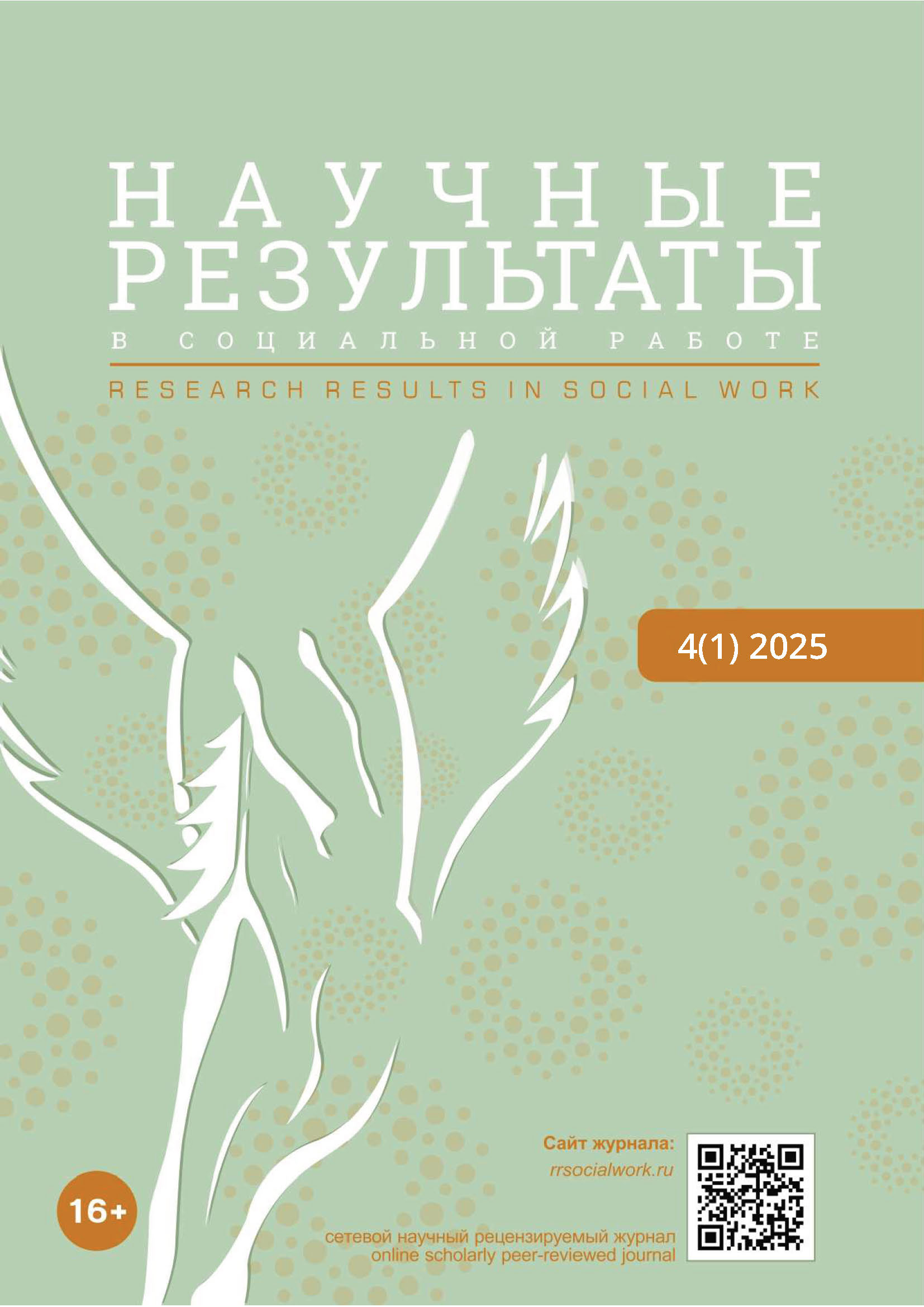The Relationship between Coping and Suicidal Risk in Persons with Disabilities
DOI:
https://doi.org/10.18413/2949-267X-2025-4-1-0-2Keywords:
coping strategies, coping, persons with disabilities, suicide, suicidal behavior, suicide riskAbstract
The problems of suicide risk of persons with disabilities are caused by their significant number not only in the Republic of Belarus, but also all over the world. Suicides and suicide attempts, not only take people's lives, but also affect the closest circle of the suicidal person, temporarily de-adapt relatives, friends, causing feelings of guilt, resentment or anger. We have considered disability as a specific crisis situation that requires resolution through various coping strategies.
The problem of the relationship between coping and suicide risk in people with disabilities remains poorly understood. The purpose of this study is to study coping strategies and suicide risk in people with disabilities, as well as to verify their relationship. We conducted a study in which 46 people with disabilities between the ages of 18 and 50 participated. As a result, we identified the most characteristic strategies, and also statistically significantly found a direct relationship between the escape-avoidance strategy and suicidal risk. The results of the study will be useful in studying this phenomenon and will help to provide more effective assistance to this category of the population.
Downloads
References
Список источников
Национальный статистический комитет Республики Беларусь, 2024 г. URL: https://www.belstat.gov.by// (дата обращения: 10.01.2025).
Список литературы
Ковалева, Е.Л. Копинг-стратегии людей с инвалидностью с разными уровнями ролевой виктимности // Клиническая и специальная психология. − 2016. − Том 5. № 4. − С. 93–102.
Морозова, Е.В. Влияние субъективного отношения к инвалидности на приверженность к реабилитации / Е.В. Морозова, С.В. Шмелева // Ученые записки Российского государственного социального университета. − 2011. − № 7(95). − С. 58−61.
Нашкенова, А.М. О факторах риска суицидального поведения // Вестник КазНМУ. − 2012. − №4. URL: https://cyberleninka.ru/article/n/o-faktorah-riska-suitsidalnogo-povedeniya (дата обращения: 21.09.2024).
Пергаменщик, Л.А. Психологическая помощь в кризисных ситуациях. − Минск: Издательство Гревцова, 2012. − 340 с.
Слайтер, Э. Изучение склонности к суицидальному поведению среди молодежи с ограниченными возможностями здоровья при переходе к самостоятельному проживанию: возможности применения в практической социальной работе // Вестник Государственного университета просвещения. Серия: Психологические науки. − 2017. − № 1 – С. 50−64.
Тарасевич, В.А. Образовательная среда и совладающее поведение как антисуицидальные факторы у людей с инвалидностью / В. А. Тарасевич, И.В. Басинская // Перспективы развития высшей школы: материалы V межд. науч.-практ. конф., в 3-х томах, т. 2 под ред. Л.К. Иляшенко. − Тюмень: ТИУ, 2024. − С. 179-183.
Хохлов, B.В. Исследование склонности к суицидальному поведению у молодых инвалидов: автореф. выпускной квалификационной работы, бакалаврской работы. − Сарат. нац. исслед. гос. ун. им. Н.Г. Чернышевского, 2020. – 10 с.
Bender W.N. Stress, depression, and suicide among students with learning disabilities: Assessing the risk. / W.N. Bender, C.B. Rosenkrans, M.K. Crane // Learning Disability Quarterly. 1999. № 22. P. 143–156.
Huntington D.D. Adolescents with Learning Disabilities at Risk? Emotional Well-Being, Depression, Suicide //Journal Of Learning Disabilities 1993. № 26(3). PP. 159-166.
Jones E. Relationship between physical disabilities or long-term health problems and health risk behaviors or conditions among U.S. high school students. // Journal of School Health. 2008. 78(5). P. 252–257.
Lazarus, R.S. Stress, appraisal and coping. // New York: Springer Pub. Co. 1984. 445 p.
Lunsky, Y. Suicidality among adults with intellectual disability. / Y. Lunsky, P. Raina, P. Burge // Journal of Affective Disorders. 2012. № 3 – P. 292–295.
References
Kovaleva, E.L. (2016), Coping Strategies in People with Disability and Differences in Level of Role Victimization, Clinical Psychology and Special Education, Vol. 5, No. 4, pp. 93–102. doi: 10.17759 /psycljn.2016050407 (in Russian).
Morozova, E.V. and Shmeleva, E.V. (2011), Vliyaniye subyektivnogo otnosheniya k invalidnosti na priverzhennost k reabilitatsii, Uchenyye zapiski Rossiyskogo gosudarstvennogo sotsialnogo universiteta, No. 7 (95), pp. 58-61, URL: https://elibrary.ru/item.asp?id=20810807, (data obrashcheniya: 15.10.2023). (in Russian).
Nashkenova, A.M. (2012), O faktorah riska suicidal'nogo povedeniya, Vestnik KazNMY, No. 4, URL: https://cyberleninka.ru/article/n/o-faktorah-riska-suitsidalnogo-povedeniya, (data obrashcheniya: 20.10.2024). (in Russian).
Pergamenshchik, L.A. and Puzyrevich, L.A. (2012), Psikhologicheskaya pomoshch' v krizisnykh situatsiyakh, Minsk.
Slayter, E. (2017), Suicidality among transitional-aged youth with disabilities: implications for social work practice, Bulletin of Moscow Region State University, No. 1, pp. 50–64, DOI: 10.18384/2310-7235-2017-1-50-64. (in Russian).
Tarasevich, V.A. and Basinskaja, I.V. (2024), Obrazovatel'naja sreda i sovladajushhee povedenie kak antisuicidal'nye faktory u ljudej s invalidnost'ju, Perspektivy razvitija vysshej shkoly: materialy V Int. nauch-pract. conf., t. 2 pod red. L.K. Iljashenko, Tyumen: TIU, pp. 179-183, URL: https://elibrary.ru/item.asp?id=73338134, (data obrashcheniya: 25.10.2024). (in Russian).
Khokhlov, B.V. (2020), Investigation of suicidal behavior in young people with disabilities: abstract. final qualification work, bachelor's work, Sarat. native research State University named after N.G. Chernyshevsky. (in Russian).
Bender, W.N., Rosenkrans, C.B. and Crane, M.K. (1999), Stress, depression, and suicide among students with learning disabilities: Assessing the risk, Learning Disability Quarterly, No. 22, pp. 143–156. DOI:10.2307/1511272
Huntington, D.D. and Bender, W.N. (1993), Adolescents with Learning Disabilities at Risk? Emotional Well-Being, Depression, Suicide, Journal of Learning Disabilities, No. 26(3), pp. 159−166. DOI: 10.1177/002221949302600303
Jones, E. and Lollar, D. (2008), Relationship between physical disabilities or long-term health problems and health risk behaviors or conditions among U.S. high school students, Journal of School Health, No.78(5), pp. 252–257. DOI: 10.1111/j.1746-1561.2008.00297.x
Lazarus, R.S. and Folkman, S. (1984), Stress, appraisal and coping. New York: Springer Pub. Co.
Lunsky, Y., Raina, P. and Burge, P. (2012), Suicidality among adults with intellectual disability, Journal of Affective Disorders, No. 3, pp. 292–295. DOI: 10.1016/j.jad.2012.03.013



